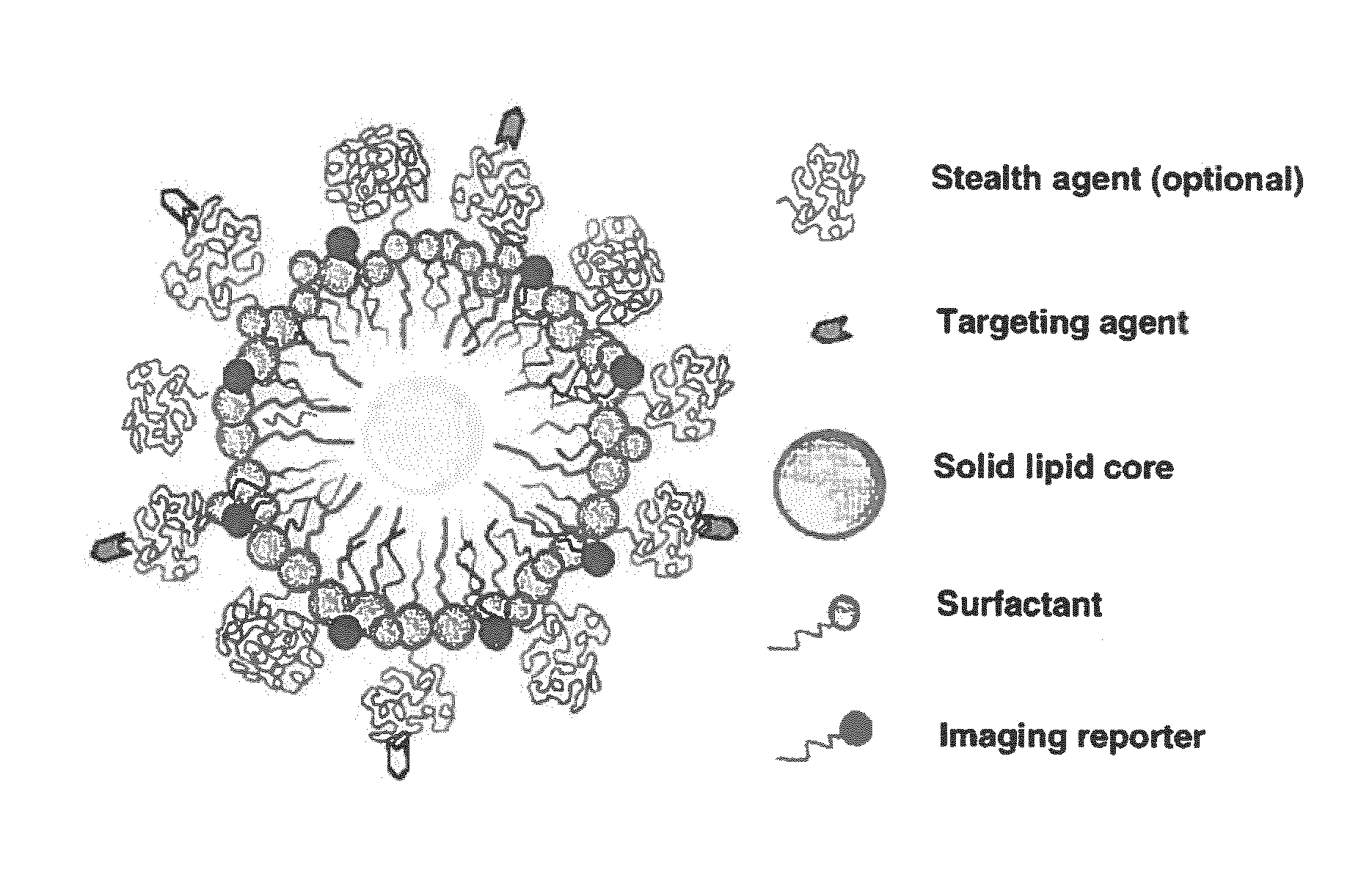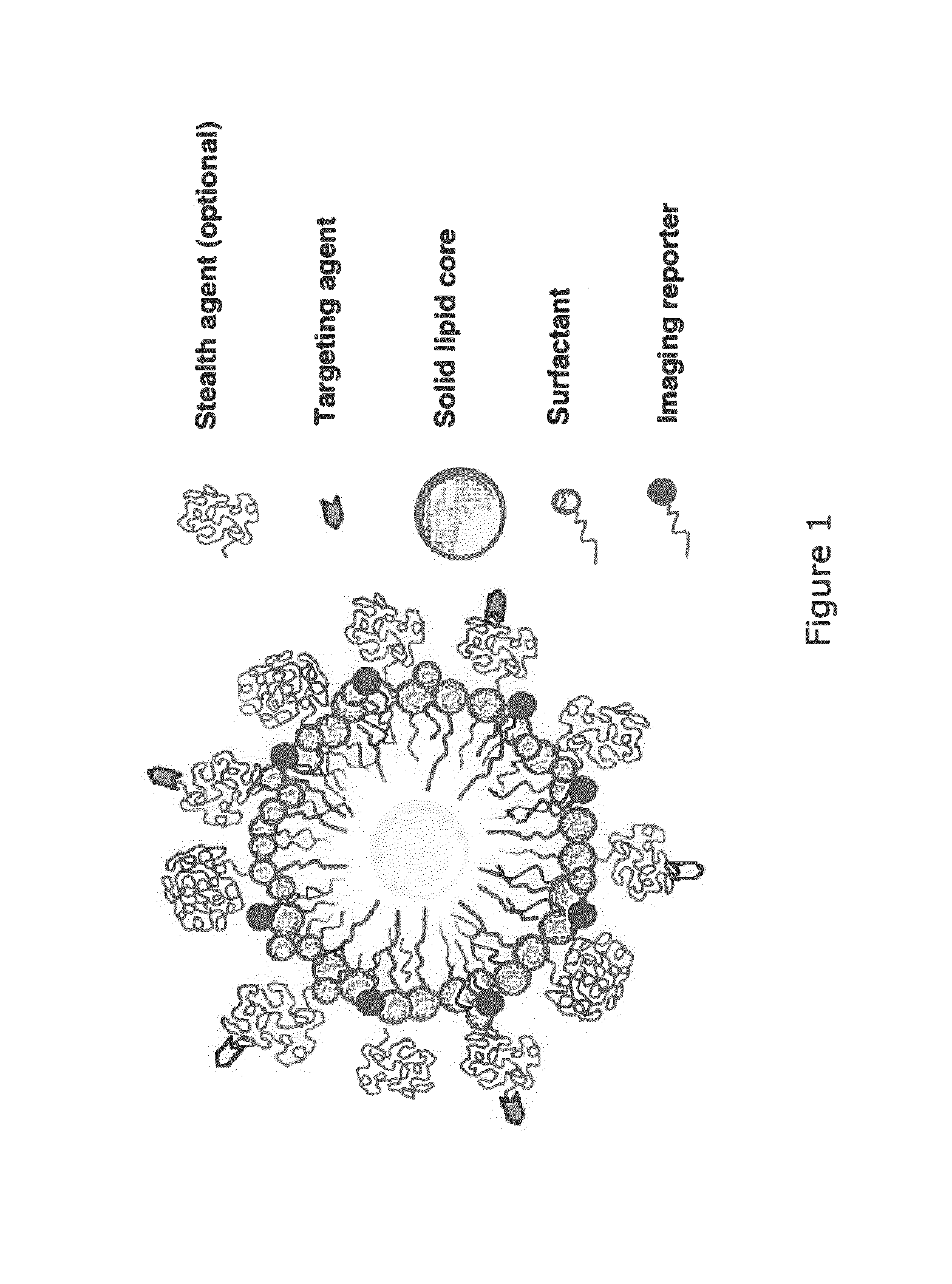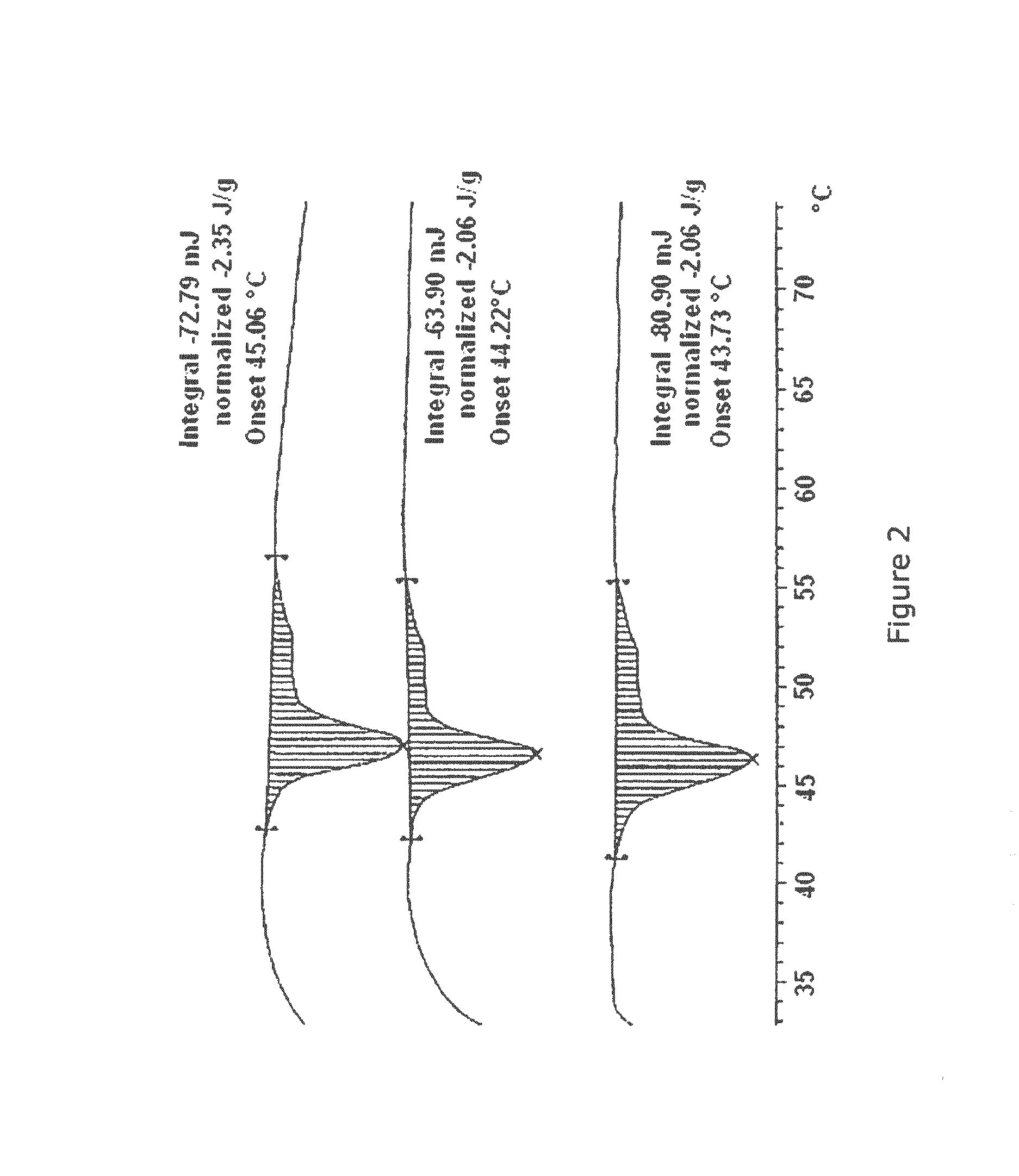Paramagnetic Solid Lipid Nanoparticles (pSLNs) Containing Metal Amphiphilic Complexes For MRI
a solid lipid nanoparticle and metal amphiphilic complex technology, applied in the field of paramagnetic solid lipid nanoparticles (pslns) containing metal amphiphilic complexes for mri, can solve the problems of lack of specificity of products for bloodstream, tissues and cellular or molecular components, nanoparticles (i.e. liposomes, quantum dots or iron oxide particles) have the disadvantage of accumulation not only in the sites o
- Summary
- Abstract
- Description
- Claims
- Application Information
AI Technical Summary
Benefits of technology
Problems solved by technology
Method used
Image
Examples
example 1.1
Preparation of Compound 5
[0153]Compound 5 was prepared in five steps according to the procedure described in US2006018830 as illustrated in the Scheme 2 below.
[0154]2-Nitrocyclohexanone was refluxed in MeOH in presence of Amberlyst A21 to give 6-nitrohexanoic acid methyl ester 1. Reaction of 1 with N,N′-dibenzylethylenediamine diacetate and paraformaldehyde gave diazepine 2 which was firstly hydrogenated to 3 and then alkylated with t-butyl bromoacetate to give pentaester 4. Selective hydrolysis of 4 by means of LiOH in THF / H2O gave 5. Overall yield 13%.
example 1
Preparation of Compound 6
6-[Bis[2-[(1,1-dimethyl)ethoxy]-2-oxoethyl]amino]-6-[(2,5-dioxo-1-pyrrolidinyl)oxy]-5-oxopent-1-yl]tetrahydro-1H-1,4-diazepine-1,4(5H)-diacetic acid bis [(1,1-dimethyl)ethyl]ester
[0155]Compound 5 (14.6 g; 0.022 mol) was dissolved in CH2Cl2 (350 mL), then NHS was added (3.75 g; 0.033 mol) and the mixture was cooled to 0° C. in an ice-bath. A solution of EDC (6.25 g; 0.033 mol) in CH2Cl2 (150 mL) was added dropwise, then the reaction solution was stirred for 24 h at room temperature. The mixture was washed with H2O (3×150 mL). The organic phase was dried (Na2SO4), filtered and evaporated to give 6 as a yellow oil (15.42 g; 0.020 mol).
[0156]Yield 92%.
[0157]Analytical data:
[0158]Mr: 768.94 (C38H64N4O12)
[0159]1H- and 13C-NMR and MS are compatible with the structure
example 1.2
Preparation of Compounds 7a-c. General Procedure
[0160]Compound 6 (1 eq) was dissolved in CHCl3 (concentration 1% w / v). A suitable phosphoethanolamine (1eq) (1,2-didecanoyl-sn-glycero-3-phosphoethanolamine, 1,2-dilauroyl-sn-glycero-3-phosphoethanolamine DLPE or dipalmitoyl-sn-glycero-3-phosphoethanolamine DPPE) and diisopropylethylamine (DIPEA) (1.7 eq) were added in this order. The solution was stirred at room temperature from 3h to 24h. The mixture was sequentially washed with H2O (1×50 mL), acidified H2O (pH 4-5 with HCl; 1×50 mL) and H2O (1×50 mL). The organic phase was dried (Na2SO4), filtered and evaporated. The crude material thus obtained was purified by flash chromatography to give compounds 7a-c as a white solid material.
Esempio 1.2a
Preparation of Compound 7a
6-[Bis[2-[(1,1-dimethyl)ethoxy]-2-oxoethyl]amino]-6-[(13R)-10-hydroxy-10-oxido-5,16-dioxo-13-(1-oxodecyl)oxy]-9,11,15-trioxa-6-aza-10-phosphapentacos-1-yl]tetrahydro-1H-1,4-diazepine-1,4(5H)-diacetic acid bis[(1,1-dimet...
PUM
 Login to View More
Login to View More Abstract
Description
Claims
Application Information
 Login to View More
Login to View More - R&D
- Intellectual Property
- Life Sciences
- Materials
- Tech Scout
- Unparalleled Data Quality
- Higher Quality Content
- 60% Fewer Hallucinations
Browse by: Latest US Patents, China's latest patents, Technical Efficacy Thesaurus, Application Domain, Technology Topic, Popular Technical Reports.
© 2025 PatSnap. All rights reserved.Legal|Privacy policy|Modern Slavery Act Transparency Statement|Sitemap|About US| Contact US: help@patsnap.com



